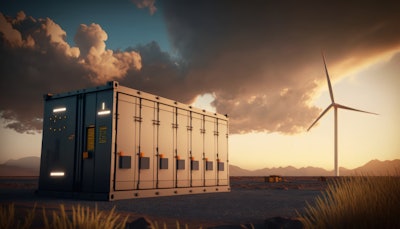
Results from a recent Jabil Inc. study reveal steady expansion in the production of energy storage systems (ESS) to ensure consistent energy supply while increasing power grid stability. In fact, 88% of the survey participants are struggling to scale production of their ESS portfolios to keep pace with rapid industry growth.
“Technology advances are fueling innovations in batteries, charging equipment, and solutions for making energy storage more accessible to households, businesses, industries, and utility grids,” says Bill Mitchell, senior business unit director for power and storage, Jabil. “This latest survey reinforces top industry trends while pinpointing some of the toughest manufacturing challenges facing companies as energy storage solutions grow in size and complexity.”
From BusinessWire:
- The majority of participants (88%) are producing solutions for commercial and industrial applications, while 61% are considering expanding into the residential and commercial/industrial markets. More than half (58%) plan to enter a new energy storage market within 3-5 years, while 14% of survey respondents plan to enter a new market in 1-2 years.
- Demand for renewable energy is the top driver of ESS development, according to 87% of those polled, followed by a desire for lower long-term energy costs (75%) and increased grid resiliency (56%)
- 66% of survey respondents are interested in developing energy storage solutions with energy capacities of 200 kWh to 1 MWh, while 62% are focused on 20 kWh to 199 kWh capacities.
- Participants expect the highest ESS deployments in the next 3-5 years to take place in North America (70%) and Europe (67%).
- 90% of participants use lithium-ion (Li-ion) batteries in existing energy storage solutions; 75% plan continued use of Li-ion batteries in the next 5-10 years. Other technologies are being used currently to a much lesser extent, including lead-acid batteries (21%) and flow batteries (19%). Rising interest in non-battery technologies, however, is poised to help increase energy resiliency, with participants planning to explore hydrogen fuel cells (20%), thermal storage (19%), and supercapacitors (13%) within the next decade.
- 75% believe in reusing ESS batteries that have reached end-of-life in new ESS solutions, yet only 39% plan to integrate second-life batteries into their own energy storage solutions. Nearly half of the participants (46%) indicated that lower battery prices could speed ESS deployments by 1-2 years.
- 88% reported an inability to scale production capacity, while 78% felt they could not build their own modules and storage systems cost effectively. Additionally, 73% reported they are not set up in the right geography to address market requirements while 61% lacked much-needed expertise to build modules and storage systems.
- Ever-increasing material costs, particularly for the steel needed to produce storage system frames, were reported by 74% of the participants. Respondents ranked additional constraints, including shortage of battery cell modules (60%), shortage of semiconductors (47%), and sourcing far from end markets, which ultimately impacted supply chain costs (44%).
















![Pros To Know 2026 [color]](https://img.sdcexec.com/mindful/acbm/workspaces/default/uploads/2025/08/prostoknow-2026-color.mduFvhpgMk.png?ar=16%3A9&auto=format%2Ccompress&bg=fff&fill-color=fff&fit=fill&h=135&q=70&w=240)